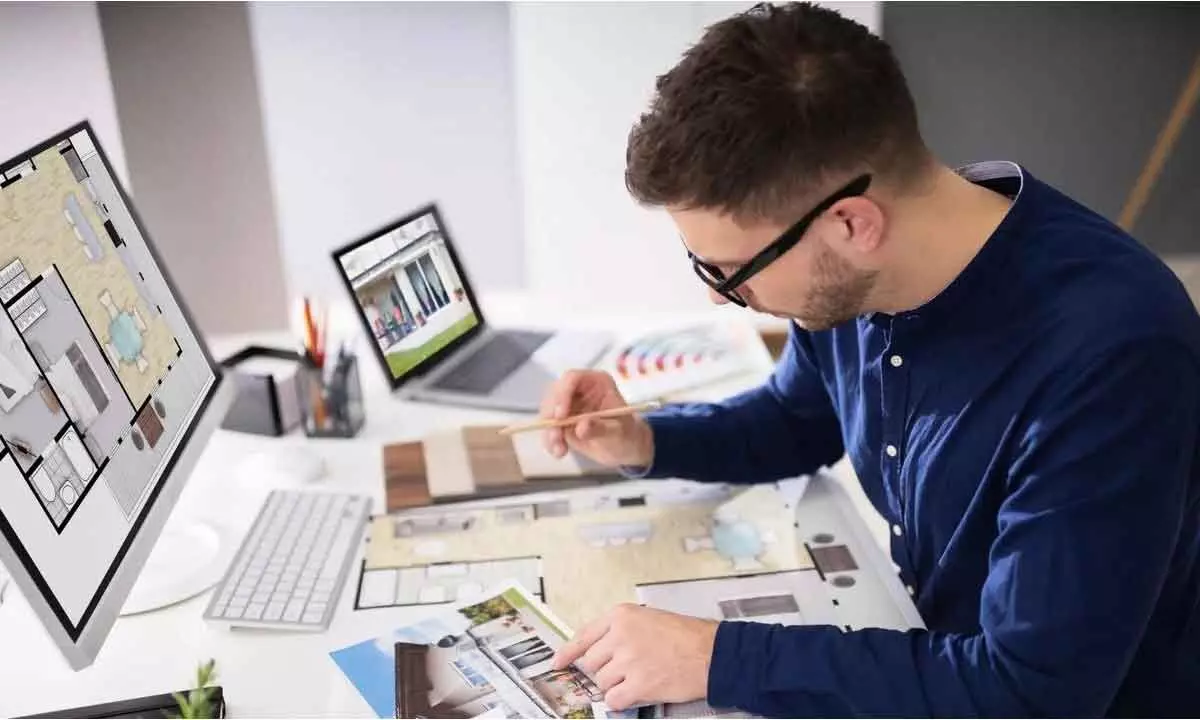Future of interior design with artificial intelligence

The future of interior design with AI is incredibly promising. AI will push creative boundaries, providing unmatched personalization and efficiency. With VR and AR, clients can step into virtual spaces, making informed decisions like never before. AI is revolutionizing the field of interior design, ushering in a new era of personalization, efficiency, and innovation. As technology continues to evolve, the possibilities for creating beautiful, functional, and personalized interior spaces are limitless. Interior designers and homeowners alike are poised to benefit from the exciting developments in this field, shaping the future of design for years to come
Intelligence (AI) is revolutionizing numerous industries, and interior design is no exception. The integration of AI in interior design is transforming the way designers work, how clients interact with design processes, and the overall efficiency and creativity within the field. Here’s an in-depth look at how AI is impacting interior design, along with relevant facts and figures.
AI in Trends for Interior Design
The use of AI in interior design trends has grown in popularity in recent years. Designers leverage AI to create spaces that are not just aesthetically pleasing but also practical and customized to meet clients’ needs. Personalization is one of the main areas where AI is making a significant impact. AI-powered algorithms analyse behaviours, lifestyles, and preferences to offer design options tailored to individual tastes. According to a report by Zion Market Research, the global AI in interior design market was valued at approximately USD 1.5 billion in 2020 and is expected to reach around USD 4.1 billion by 2026, growing at a CAGR of about 18.4% between 2021 and 2026.
Changes Brought by AI to the Interior Design Sector:
Customized Design Options
One of AI’s biggest impacts on interior design is the ability to offer highly customized design solutions. AI algorithms can analyse vast amounts of data, such as user preferences, lifestyle choices, and even social media activity, to produce personalized design solutions. AI-powered recommendation engines, for example, suggest furniture, color palettes, and décor pieces that align with a client’s individual taste. This level of personalization has increased client satisfaction and streamlined the design process.
Designing Interiors with Machine Learning
Machine learning, a branch of AI, enhances algorithms and models through experience. By utilizing past data, machine learning algorithms are being applied to interior decoration to predict design trends. Designers and manufacturers can anticipate future styles and colors by analysing previous trends and consumer preferences. This predictive ability allows designers to stay ahead of the curve and offer clients new and innovative design concepts. According to a study by Accenture, 79% of executives believe
Enhancing Sustainability
Sustainability is becoming increasingly important in interior design, and AI is playing a crucial role in promoting eco-friendly practices. AI can evaluate the environmental impact of various materials and suggest sustainable alternatives. It can also optimize energy use within a space by recommending smart lighting and climate control systems. By leveraging AI, designers can create interiors that are both aesthetically pleasing and environmentally responsible. The International Data Corporation (IDC) predicts that by 2025, 75% of large enterprises will have incorporated AI-based sustainability initiatives into their business strategies.
Bridging the Gap between Designers and Clients
The use of AI is improving client-designer communication. AI-driven systems facilitate real-time client input and prompt feedback, enabling real-time collaboration. Increased customer involvement in the design process and correct capturing of their visions are guaranteed by this interactive process. Furthermore enhancing overall customer service and experience, AI chatbots and virtual assistants can deliver customers prompt responses to their questions.
Integration of Virtual Reality (VR) and Augmented Reality (AR)
AI is transforming the interior design sector by improving and optimising a number of design process elements. It helps designers to develop immersive 3D models and simulations using augmented reality (AR) and virtual reality (VR) technology so that clients can see and navigate their future places in real time. Immersive and engaging design experiences can be produced with AI-powered VR and AR tools. Customers are able to examine realistic previews. This facilitates their feedback-giving, allowing the interior designer to make the necessary physical adjustments.
The future of interior design with AI is incredibly promising. AI will push creative boundaries, providing unmatched personalization and efficiency. With VR and AR, clientscan step into virtual spaces, making informed decisions like never before. AI is revolutionizing the field of interior design, ushering in a new era of personalization, efficiency, and innovation. As technology continues to evolve, the possibilities for creating beautiful, functional, and personalized interior spaces are limitless. Interior designers and homeowners alike are poised to benefit from the exciting developments in this field, shaping the future of design for years to come.
(The author is Director and Founder of ARCH College of Design andBusiness, Jaipur)















